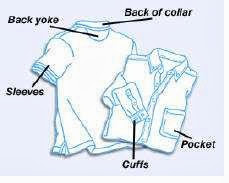Embroidery Cost Analysis & Pricing

Maruf Mahfuz
Email: maruf.txt@gmail.com
Cell: 01738676060
Department of Textile Engineering
World University of Bangladesh

Maruf Mahfuz
Email: maruf.txt@gmail.com
Cell: 01738676060
Department of Textile Engineering
World University of Bangladesh
Brief History:
Embroidery is the art or handicraft of decorating fabric or other materials with needle and thread or yarn. In this way, it has been practiced for decades. In Siberia, around 5000 and 6000 B.C. elaborately drilled shells stitched with decorative designs onto animal hides were discovered. Chinese thread embroidery dates back to 3500 B.C. where pictures depict embroidery of clothing with silk thread, precious stones and pearls. Examples of surviving Chinese chain stitch embroidery worked in silk thread have also been found and dated to the Warring States period (5th-3rd century BC).
Costing:
Embroidery fees are based on a “Per Stitch” count. After art is prepared, producer will run a stitch count to determine the cost of the embroidery. Once art is digitized, stitch count is determined. Stitch can estimate by, using these stitch count guidelines.
If we use a singlehead embroidery machine properly, it should produce anywhere from 18,000 to 30,000 stitches per hour (300 to 500 stitches per minute). Using the cost figure calculated above, our cost per thousand stitches could range anywhere from $0.67 to $1.11, At an operating cost of $20 per hour, sewing at 30,000 stitches per hour produces units at $0.67 per hour, while a machine sewing at 18,000 stitches per hour produces units at $1.11.
 |
| Figure: Multihead Embroidery machine |
Here are some ways to help estimate the stitch count for an image (but until it is digitized, this
is just an estimate):
- 1 solid square inch of embroidery equals approximately 2,000 stitches.
- 1 solid 1/4 square inch of embroidery equals approximately 125 stitches.
- Your letters should never be less than 3/16” in height and a letter that is 1/4” in height equals about 100 stitches.
- Drop shadows in your logo will translate into 200 extra stitches per inch.
- Straight lines under logos typically require 200 extra stitches per inch. Fabrics, colors and artwork detail will affect the amount of stitches.
- Minimum Lettering - 3/16” H
- Shirts - Left or Right Chest - 3” x 4” (logo height x logo width)
- Shirts with Pocket - above pocket - 2 3/4” x 4”
- Cuff - 1.5” x 2.5”
- Shirts - Short Sleeve Print - 3” x 3”
- Caps - Front Panel - 2.25” x 5”
Conclusion:
Initially, embroidery was primarily or even almost exclusively women’s work, this changed abruptly with the introduction of embroidery machines. The work on the machine was exclusively men’s work, the woman was, however, still required as a helper-she took care of the replacement of broken needles and the threading, if a thread had ended. Embroidery no longer has the significance for the region as at the beginning of the last century, it is still an economic factor.
Initially, embroidery was primarily or even almost exclusively women’s work, this changed abruptly with the introduction of embroidery machines. The work on the machine was exclusively men’s work, the woman was, however, still required as a helper-she took care of the replacement of broken needles and the threading, if a thread had ended. Embroidery no longer has the significance for the region as at the beginning of the last century, it is still an economic factor.















No Responses to "Embroidery Costing | Embroidery Cost Analysis and Pricing"